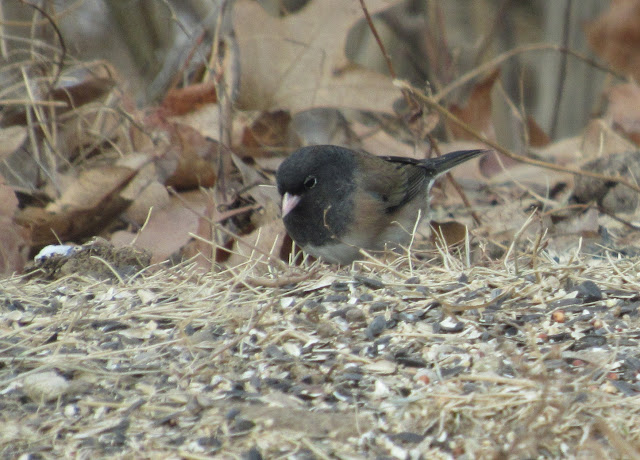I had my fifth lifer bird of the year recently, and it is quite an interesting story, that. Recently a local birdwatcher, one of the most active ones in my area, spotted a Prairie Falcon at Nipper Wildlife Sanctuary. Some have heard of the Peregrine Falcon (more on that later), the famous falcon and fastest bird in the world (able to dive through the air at 200+ miles per hour) that has become a conservation success story. Peregrines are uncommon in Illinois, and it's a great day when I see one (more on them later...)
However, Prairie Falcons in Illinois are rare, REALLY rare. Birdwatchers are interested when you see a Peregrine Falcon. They send you emails and location questions on Facebook for Prairie Falcons. Prairie Falcons are rarely seen east of western Kansas. Despite their name, they are far more fond of mountains than prairie, and the majority of their range falls within the Mountain and Pacific Time Zones. In the winter, they come down to the prairies, and occasionally east. Thus, one residing about half an hour or so from my house deserves investigation.
On the way, I found this American Kestrel (Falco sparverius), the smallest, most colorful, and only common falcon species in my area. It was "hovering" in the air, something a Kestrel does when after a mouse. It eventually caught the mouse, and I moved on, as a great white flood flew over:
Over five thousand Snow Geese (Chen caerulescens) flew overhead, in a line stretching as far as the eye could see, and proceeding over my head for fully fifteen minutes or more. It was a sight uncapturable on camera, and I regret that there was no one else to see it with me.
I continued to walk past still fields, with only the swooping of a hawk or the sudden flight of a pheasant (above) to break my thoughts. There were a good number of Northern Harriers (Circus cyaneus) swooping about, skimming low over the fields before swinging back up into the sky:
I look forwards to the days when I can afford a better camera for moments like this. There were about eight Northern Harriers in the sky at one time!
I walked all the way to the back of Nipper, which is a fairly long walk. I ended up in private property, a neighboring grassland, by accident, and after realizing this when I saw a hunting stand, hastily retreated back to Nipper, where hunting is not permitted.
On my way back, I found this gigantic pile of wood in the middle of the field, almost as tall as I am. I wonder what might live in it? That is a quest for another day.
I then worked my way back up to the viewing hill, but I saw no Prairie Falcon. I ran into another birder, and in my excitement to finally meet another local birder, I think I may have given this person a bad impression of myself! We teamed up for a bit, looking for the bird, but I had to leave. He found the Prairie Falcon twenty minutes, to the minute, after I left. GRRR!!!
Still, I persevered, and returned out a few days later. Earlier in the day, I had seen a Peregrine Falcon while driving along in the flat, low suburban commercial districts of Springfield- not generally the place to see a bird fond of tall skyscrapers and wilderness cliffs! I thought I'd exhausted my luck for the week, but I gave the falcon another chance. I also found another American Kestrel, on a wire:
By award-winning, I mean that it's the worst photo of anything that I have photographed this year. Still, the lighting was poor, it was hundreds of feet away, and the wind was blowing strongly directly at me. I'm happy you can even see the Prairie Falcon (the white dot in the center is its chest.) I had a better look through my scope, and I identified it based on that. I looked at it from multiple angles to confirm what it was, satisfied myself that it was what it was, and left. At least this time I finally got a photo of one of my lifer birds!
I've come to the conclusion that I am best with photographing landscapes. See above for details. Also, on an interesting side note, as of this writing I was the last person to see the Prairie Falcon at Nipper. Other birders arrived in the following days, but there were no further sightings. If you're trying to find it, look in the evening on soil ridges just south of the first, northernmost ditch perpendicular to Lead Line Road.
Ebird Checklists:
First Trip:
http://ebird.org/ebird/view/checklist/S33871587
Peregrine Falcon:
http://ebird.org/ebird/view/checklist/S33950743
Second, successful Trip:
http://ebird.org/ebird/view/checklist/S33954058
































































